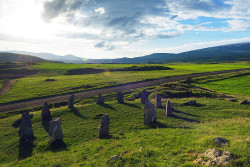Syunik Province
Its capital and largest city is the town of Kapan. The National Statistical Service of the Republic of Armenia (ARMSTAT) reported its population was 141,771 in the 2011 census, down from 152,684 at the 2001 census.Historically, Syunik is supposed to be one of the 15 provinces of the ancient Kingdom of Armenia. At various times, the region of present-day Syunik was also known by other names such as Syunia, Sisakan and Zangezur (or Zangadzor. However, the present-name of the province is derived from the ancient Armenian Siunia dynasty, who were the Nakharar (governors) of the historic province of Syunik since the 1st century.Syunik is located between the Nakhchivan Autonomous Republic of Azerbaijan from the west, and the de facto independent Nagorno-Karabakh Republicfrom the east. The Vayots Dzor Province of Armenia forms its northern borders, while Aras River at the south separates Syunik from Iran. Syunik covers an area of 4,506 km² (15% of total area of Armenia), making it the second-largest province in Armenia after Gegharkunik in terms of the total area.Mount Kaputjugh (3905 m.)Historically, the current territory of the province occupies most of the historic Syunik province of Ancient Armenia.Syunik is a mountainous region, mainly covered with thick green forests. The Zangezur Mountains occupy most of the territories of Syunik. Mount Kaputjughwith a height of 3905 meters and Mount Gazanasar with a height of 3829 meters are the highest peaks of the province.Many of the forests in Syunik are protected by the government, including the Arevik National Park, the Shikahogh State Reserve, the Boghakar Sanctuary, the Goris Sanctuary, the Plane Grove Sanctuary, the Sev Lake Sanctuary, and the Zangezur Sanctuary,Major water basins include the rivers of Vorotan, Voghji, Sisian, Meghri and Vachagan. Summer temperature can reach up to 40 °C, although the average temperature is around 22 °C, while in winter it may reach down to -12.5 °C. Its border with Nakhchivan to the west is defined by the Zangezur Mountains.Meghri mountain ridge at the extreme south of Armenia used to be home to the Endangered Caucasian leopards. However, only one individual of them was camera-trapped between August 2006 to April 2007, and no signs of other leopards were found during track surveys conducted over an area of 296.9 km2 (114.6 sq mi). The local prey base could support 4–10 individuals, but poaching and disturbance caused by livestock breeding, gathering of edible plants and mushrooms, deforestation and human-induced wildfires are so high that they exceed the tolerance limits of leopards. During surveys in 2013–2014, camera traps recorded leopards in 24 locations in southern Armenia, of which 14 are located in the Zangezur Mountains.

